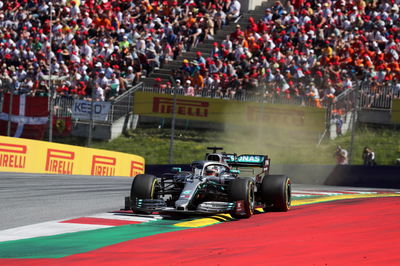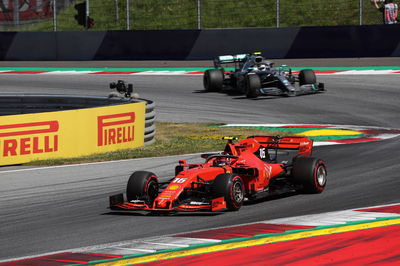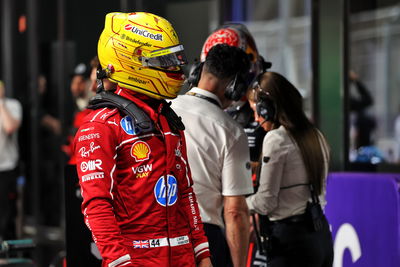Hamilton had to “cruise” to finish with temperature issues
Engine-related temperature concerns for Mercedes meant Lewis Hamilton had to “cruise” to the finish in Formula 1’s Austrian Grand Prix.
Hamilton had ran as high as first but dropped to fifth after damaging his front wing over the Spielberg kerbs, forcing Mercedes to carry out a change during his pit stop.
The current F1 championship leader was unable to make any inroads in the closing stages and ultimately crossed the line a distant fifth on a difficult day for the reigning world champion squad.

Engine-related temperature concerns for Mercedes meant Lewis Hamilton had to “cruise” to the finish in Formula 1’s Austrian Grand Prix.
Hamilton had ran as high as first but dropped to fifth after damaging his front wing over the Spielberg kerbs, forcing Mercedes to carry out a change during his pit stop.
The current F1 championship leader was unable to make any inroads in the closing stages and ultimately crossed the line a distant fifth on a difficult day for the reigning world champion squad.
“I was just pushing as hard as I could but just limited by temperatures,” Hamilton said.
“I damaged the car, which was a little bit frustrating because I had to change the wing, lost a bunch of time and fell back to fifth. We were already struggling with temperatures so I had to just cruise back there basically.
“We were lifting and coasting like 400 metres plus per lap, so we were a long way down and even if I didn’t have to do that we would have pace I think but unfortunately that’s just the way it was.
“If we didn’t have our engine temperature issues today we would have been in that fight.
“I had the tyres to do it, had the pace to do it, I would have been in that fight but unfortunately with the ways these cars and rules are set, means unfortunately we were in the wrong place today.”
Mercedes had been worried about cooling problems in the build up to this weekend’s race and team boss Toto Wolff said the issues resulted in both cars being “right on the limit” in Austria.
“We knew that it was our Achilles’ Heel and we were carrying the problems since the beginning of the season,” Wolff explained.
“We tried to work on mitigating the performance loss, but at the end it was really painful to watch cruising, not being able to defend or attack.
“The next step would have been to remove all the bodywork. So that was not really an option because the sponsors wouldn’t have liked it!
“Right on the limit. We couldn’t do anything anymore, and it was already very damaging for performance what we did. There was no step left anymore.”












